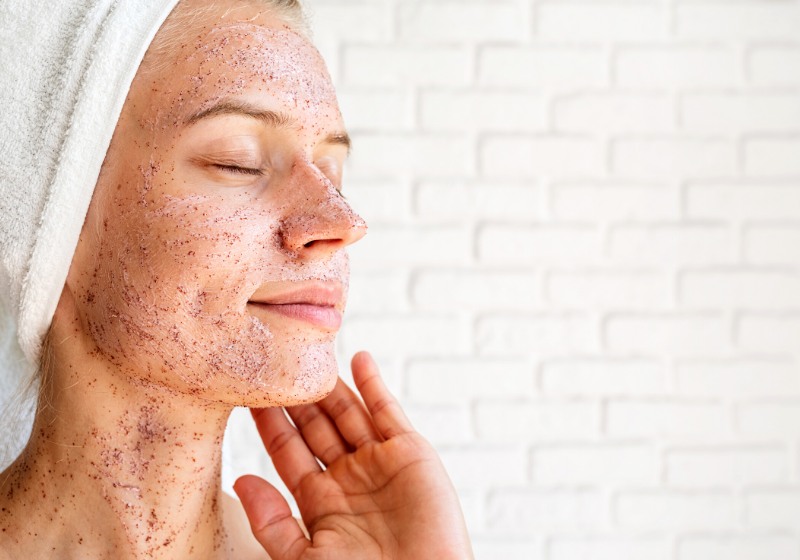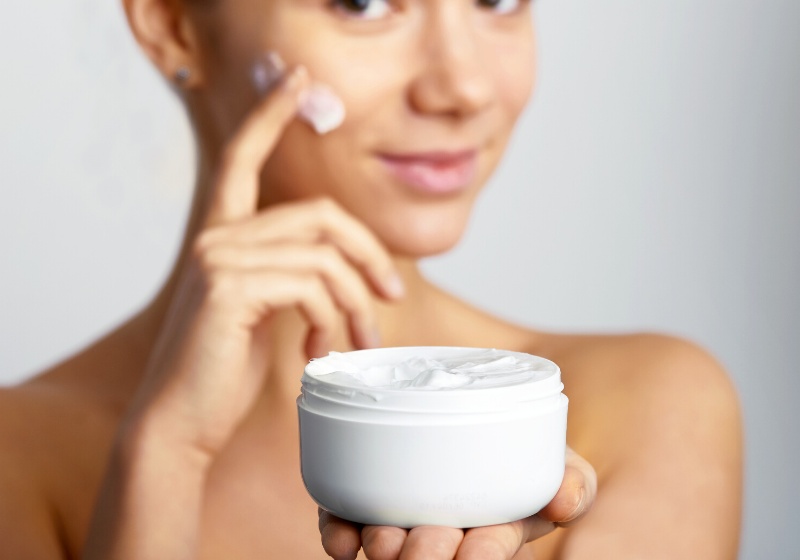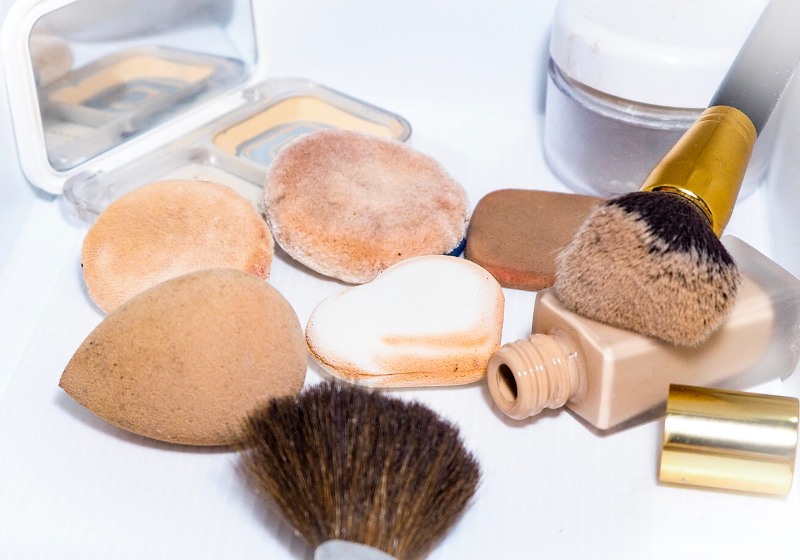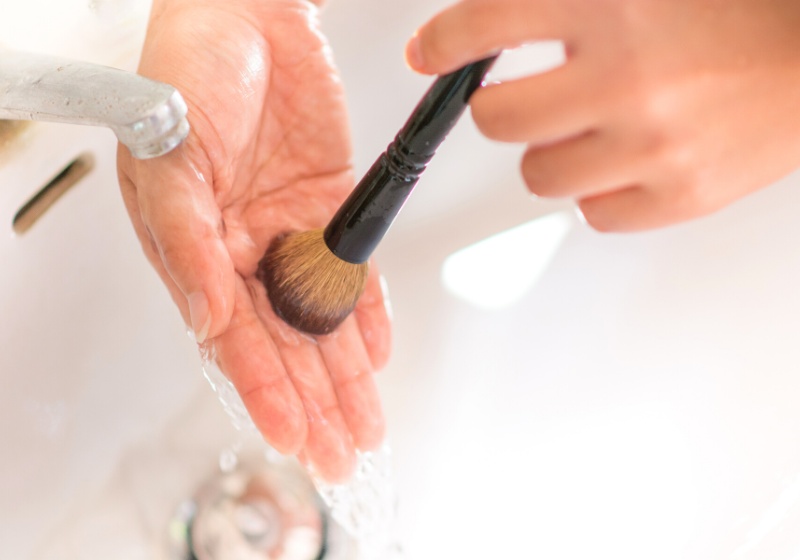Skincare Routine Transition From Winter To Spring

When the season changes from winter to spring, it’s essential to switch up your skincare routine to address your skincare needs. Read on to learn more!
RELATED: 2020 Skincare Trends: 7 Biggest Beauty Innovations To Watch Out For
Winter to Spring Skincare Transitions You Must Know
1. Opt for Lighter and Milder Cleansers
The harsh cold during the winter months usually strips our skin of its natural moisture. That’s why winter skincare is all about moisture-locking and boosting dry skin.
When the temperatures begin to rise, though, your skin won’t need all that additional moisture. Warmer temperatures allow your skin to produce more of its natural oils.
So instead of using thick hydrating cleansers, opt for milder and lighter cleansers. Gel cleansers or foaming water facial cleansers are great options for spring.
2. Try a Gentler Exfoliator

It’s important to keep exfoliating even as you enter into the spring months. The cold winter air may have left your skin dry and rough, so it’s important to remove the layers of dead skin.
As you ease into the spring months, though, you can switch out your rougher scrubs for a gentle exfoliator. Pick a product with small amounts of glycolic acid.
What is glycolic acid? It’s a colorless and odorless chemical compound that helps remove dead cells from the top layer of your skin. It’s best for people with normal, oily, or combination types of skin.
Gentle exfoliators include exfoliating pads or facial cleansers with small amounts of glycolic acid. If you prefer leave-on glycolic acid products, try using them only once a month during springtime.
Remember, over-exfoliation can make your skin more sensitive to the sun. So if you don’t want to risk getting a sunburn on your face, go easy on the exfoliators
3. Go for Water-Based Serums

Thick and concentrated serums are a godsend during the winter months. Oil-based serums are especially great for winter because they can penetrate deeply into the skin while locking in moisture.
You don’t have to give up using serums just because it’s warmer. Trade-in your oil-based serums for water-based ones. What are water-based serums? These are serums with a water or aloe base. It can have a watery or gel-like texture.
A water-based serum still has all of the concentrated nutrients for your skin, but it’s more lightweight. Your skin can also absorb water-based serums more quickly, so it’s perfect for daytime use.
RELATED: Spring Skincare Routine: 9 Tips For A Healthier Skin This Spring
4. Use a Lightweight Moisturizer

When it’s warmer, you may be tempted to skip your moisturizer altogether. Remember, though, with warm weather comes more sweat and sun exposure—both of which can dehydrate your skin.
During the spring or summer months, thicker moisturizers can make your skin too oily and break out. So when the seasons change, it’s best to switch to a lighter moisturizer formula.
Tip: Try a water-based moisturizer or a moisturizer with hyaluronic acid. Hyaluronic acid helps attract more water without making the skin too oily.
5. Switch to a Separate Sunscreen

During winter, you’re more likely to stay indoors, so you could probably get away with using skin care products with some added SPF. Now that it’s spring and nice out, you need to make sure you protect your skin from harsh UV rays.
Remember, sun exposure is one of the leading causes of premature skin aging. To prevent this, you need to make sure you’re using a separate and dedicated product for sun protection.
Make sure to get a sunscreen that offers at least an SPF of 50. These days, there are lightweight sunscreens that won’t leave you with that annoying white cast.
6. Throw Out Old Makeup and Skincare Products

Spring cleaning is a time-old tradition that should make its way into your skincare routine. As you tweak your regimen for the new season, don’t forget to throw out old makeup or skincare products.
For some products, you can check the packaging for the “period after opening” symbol. This usually looks like a small cosmetics tub, and it indicates the number of months the product will stay fresh and potent.
For example, if it says 24M, it means that the product can stay fresh and potent for up to two years if it’s stored properly. Other products will have a specific expiration date on them.
Remember, bacteria can quickly buildup on your makeup and skincare products over time—especially if it’s exposed to open air for a long time. So if you notice a change in consistency, texture, or odor, it’s probably best to throw it out.
If you continue using compromised products, they may not be as effective. It may even end up clogging your pores and damaging your skin.
Tip: To help you remember when you started using a product, write the date down on the container when you use it for the first time.
7. Sanitize Makeup and Skincare Tools

Apart from throwing out old products, it’s also important to sanitize your makeup and skincare tools. Tools like makeup brushes, face rollers, and sponges require regular cleaning to prevent product buildup.
Product buildup is a breeding ground for germs and viruses. So as you change your skincare regimen for the season, try to include this sanitation step at least once a week.
If you don’t have a UV sterilizer to decontaminate your tools, here are a few things you can do to keep them clean:
- Wash your tool in lukewarm water.
- Use a few drops of your favorite brush cleanser.
- Make sure the cleanser is evenly distributed.
- Rinse the tools in warm water.
- Squeeze out excess water using a clean towel.
- Wipe down the hard parts of your tools completely.
- Air dry or blow dry soft parts of the tools like bristles and sponges.
These simple habits may seem inconsequential, but they can have a significant impact on your skin’s health.
Watch this video by Nikkia Joy on how to clean your makeup brushes properly without damaging them:
Each season affects your skin in different ways. Harsh weather conditions can exacerbate existing skin issues or even create new ones.
That’s why it’s so essential for your skincare routine to adapt to these changes. These tips will help you prepare for the sunnier days ahead!
Do you make any changes in your skincare regimen when the seasons change? Share your tips with us in the comments section below!
Up Next:
- 15 Best Clean And Vegan Skincare Brands You Didn’t Know About
- Spring Makeup Collection 2017 | Makeup Tutorials Guide
- Lovely Makeup Tutorials For Blue Eyes
We aim to feature the best of the best in the makeup world, and maybe that can include you! WRITE for us!
Follow us on Facebook, Twitter, Instagram, and Pinterest for the latest makeup, hair, and nail trends. Don’t forget to subscribe to our Youtube Channel for cool makeup tutorials.
Editor’s Note: This post was originally published on March 31, 2020, and has been updated for quality and relevancy.






